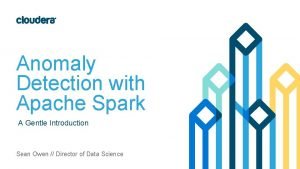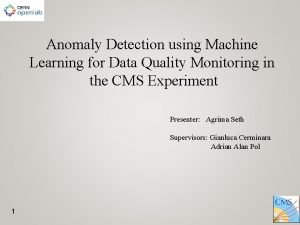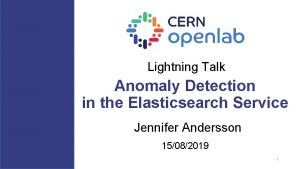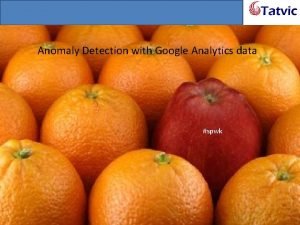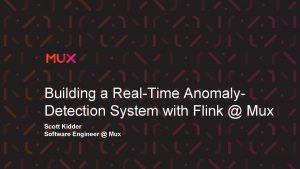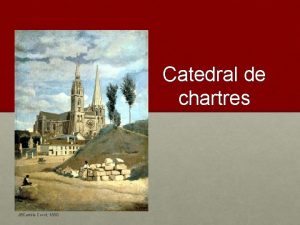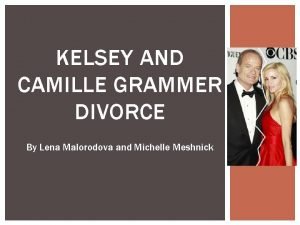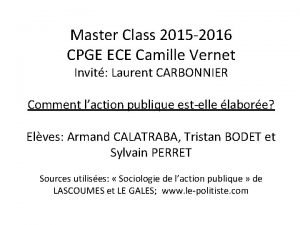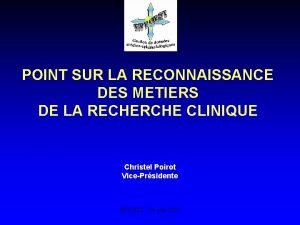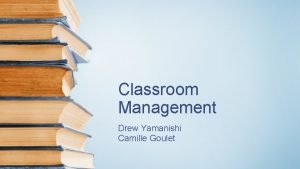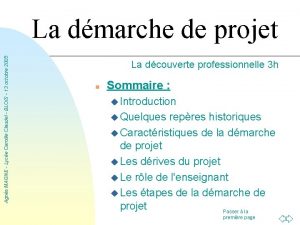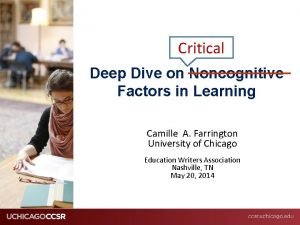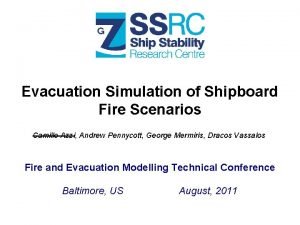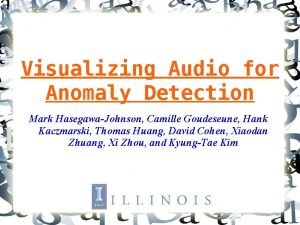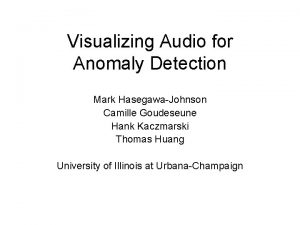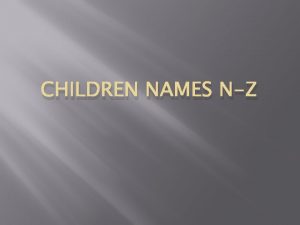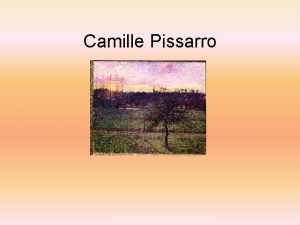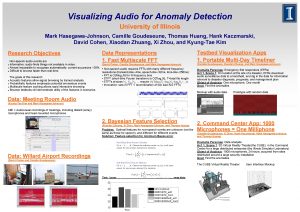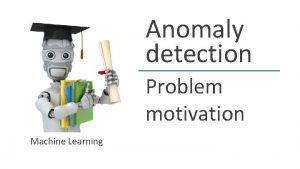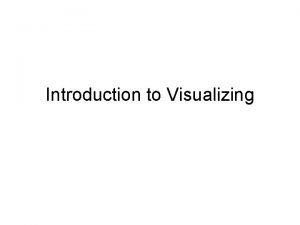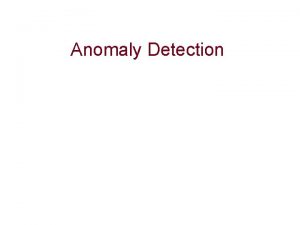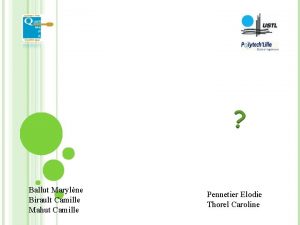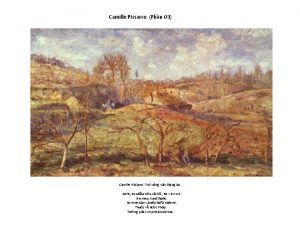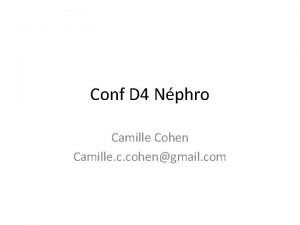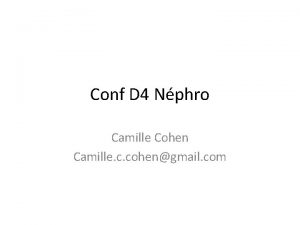Visualizing Audio for Anomaly Detection Mark HasegawaJohnson Camille
















- Slides: 16

Visualizing Audio for Anomaly Detection Mark Hasegawa-Johnson Camille Goudeseune Hank Kaczmarski Thomas Huang University of Illinois at Urbana-Champaign

Research Goal: Guide audio analysts to anomalies • Large dataset: audio • Anomalies • Cheap to record, expensive to play • GUI: listen 10000 x faster • Robots are poor listeners, but good servants

• Anomalies shoot down poor theories

• Feature : audio interval numbers • Visualization : numbers rendering • Audio-based features (spectrogram) • Model-based features (Hnull, Hthreatening)

Audio-Based Features: Transformed acoustic data • Pitch, Formants • Anomaly Salience Score • Waveform A = f(t) • Spectrogram A = f(t, Hz) • Correlogram A = f(t, Hz, fundamental period) • Rate-scale representation A = f(t, Hz, bandwidth, ΔHz) • Wavelets • Multiscale

Model-Based Features • • Log-likelihood features Display how well a hypothesis fits Let analyst intuit a threshold of fitness Defined by Mixture Gaussians, trained by: EM Parzen Windows One-class SVMs

Model-Based Features • Log-likelihood features Log-likelihood ratios (LLR) • Because Mixture Gaussian misclassifies outliers as anomalies

Too many features! • Evaluate each feature with Kullback-Leibler Divergence • Combine features with Ada. Boost + SVM + HMM

Two Interactive Testbeds • • • Vary features Vary anomalies Vary background audio Vary how model is trained Vary mapping from features to HSV • Anomalousness “bubbles up”


Multi-day audio timeline


1000 μphone = The Milliphone

Human Subject Protocols • Tutorial • Training with immediate feedback • Measure how fast subjects find x% of anomalies

Influence on FODAVA • Guide, don’t replace, human analysts • Guide them with zoomable features • Features from transformed data (audio-based) • Features from fitting hypotheses (model-based)

Developing FODAVA • Make “big” audio accessible • Audio is hard, but its concepts generalize • Fast interactive exploration of time series, long (timeline) or wide (milliphone)
 Anomaly detection spark
Anomaly detection spark System log analysis for anomaly detection
System log analysis for anomaly detection Agrima seth
Agrima seth Elasticsearch anomaly detection
Elasticsearch anomaly detection Google
Google Flink anomaly detection
Flink anomaly detection Camille spreadsheet
Camille spreadsheet Catedral de chartres corot
Catedral de chartres corot Kelsey grammer marriages
Kelsey grammer marriages Camille vernet prepa
Camille vernet prepa Epigest
Epigest Acrostiche camille
Acrostiche camille Program camille
Program camille Camille goulet
Camille goulet Lycée camille claudel blois
Lycée camille claudel blois Camille farrington
Camille farrington Camille azzi
Camille azzi
